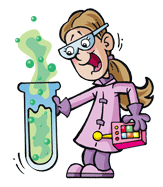
Language Arts
In third grade, students continue to develop strategies to effectively use language. Through the presentation of reports and journal writing, they learn to write and speak for a specific purpose. Students learn to become strategic readers by identifying the elements of a story. They read expository material for specific information. Study skills include note taking, the use of reference materials, interpreting graphs and diagrams, and test-taking skills. Vocabulary development continues to include the refinement of phonetic and decoding skills. Word analysis strategies include: homonyms, antonyms, synonyms, analogies, multiple meaning and compound words. Students expand their vocabulary by learning strategies for identifying unfamiliar words.
Reading comprehension skills taught include: understanding fiction and nonfiction reading selections, identifying main ideas, sequencing events, recalling details, making predictions, drawing inferences, and understanding cause-and-effect relationships. Third graders continue to learn and practice the steps of the writing process. Peer conferencing is introduced as another revision technique. Proper grammar, spelling, and the mechanics of writing are taught to enable students to proofread and communicate more effectively.
Mathematics
Third graders focus on fact families in addition, subtraction, multiplication, and division. They continue developing strategies for multi-digit addition and subtraction problems. Learning multiplication facts through the 10s is a goal this year. Other third-grade skills include understanding large numbers in addition to working with small numbers using equivalent fractions and decimals (to the thousandths). They continue the study of geometry, negative numbers, calculator skills, telling time, and geometry.
Practical application of measurement skills includes linear, weight, and capacity with customary and metric units. Students perform probability experiments that provide information for analyzing data and predicting outcomes. Third graders will have daily assessments using a variety of tactics including clickers, written, oral, and group work.
Science
The third-grade curriculum focuses on the physical, earth, and life sciences. In the Structures of Life module, students observe and record the structures of a crayfish. After creating an enriched crayfish habitat, students investigate and record behaviors in this habitat. Students also complete a thorough investigation of seeds--both comparing seed properties and investigating the effect of water on seeds.
The Water unit provides students with activities to explore the properties of water and the interaction between water and other earth materials. Students observe and explore properties of water in liquid and solid states, observe the expansion and contraction of water as it gains and loses heat, and investigate factors that influence the cycle of evaporation and condensation of water. In the Sound unit, students learn to discriminate between sounds, explore sound generators and musical instruments to discover what causes sound and how pitch changes.
During a unit on The Human Body students will observe and study the human skeletal and muscle systems. They will use photographs, diagrams, and even artificial bones to gather information. Students also study the Solar System and the relationship between the sun, moon, and Earth. This unit is supplemented with literature that further explains the place of our solar system within the universe. To further enhance the students' understanding of the interdependency of the animal world, students will be asked to complete an animal research paper toward the end of the school year.
Social Studies
Students also study the regions of the United States and Michigan. In their study of the regions of the U.S., they learn how geography, climate, and natural resources have impacted the development and history of the areas. The regions are compared to one another. Students extend their skills in geography, problem solving, and study skills. The students thoroughly study the state of Michigan. Included in this study are Michigan's geography, regions, history, and government. Students also expand their understanding of core democratic values.
Vocal Music
In third grade, students continue to build upon their musical knowledge-base as more complex songs, musical notation, and vocabulary are presented by the music specialist. Students actively demonstrate their awareness of the elements of music through their successful use of dynamics, tone color, melody, and harmony in the songs they sing and in the accompaniments and compositions they create. Students deepen their understanding of the world around them and hone their critical-thinking skills by tracing a song's geographic, historical and cultural roots, as well as listening to, analyzing, interpreting, and responding to a variety of songs and musical works.
Physical Education
Third-grade students continue to work on gross-motor skills, spatial awareness, and body control. At this level, there is an increased emphasis on cardiopulmonary fitness, muscular strength, and endurance. Students are encouraged to run or do continuous movement activities to increase their pulse rates. Students are involved in gymnastics with and without apparatus. Students explore the principles of eye-hand-foot coordination through a variety of activities. They develop body coordination, strength and endurance, a sense of fair play, and cooperation with others.






